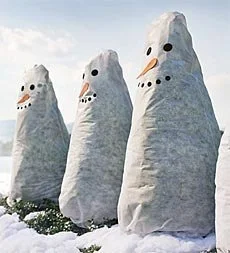For trees such as red maple, crabapple, apple, cherry and peach a simple layer of tree wrap can make the difference between life and death this winter. The wrap protects the young trunks of susceptible trees from cracking. The cracking is called “Southwest injury” since it usually occurs on the southwest side of the trunk.
Southwest injury begins when the afternoon sun warms the bark on clear winter days. Once the sun sets, the drop in temperatures on a clear night can be rapid. The water in the trunk rapidly freezes and expands, resulting in cracked bark.
If a tree becomes a victim of southwest injury, the cracking and reduced bark cover can make the tree much more susceptible to borers and other pests. These infestations can kill the tree.
Although most cracking does not show until the following summer, the damage occurs in winter. The wrap works by shading the trunk from the warm day sun, minimizing the effects of the freeze and thaw cycles. Any time after about mid-November is the time to wrap.
The insulating wrap comes in a roll and is easy to apply to the tree trunk. Starting at the bottom, tuck the end under the first lap around the trunk. Then spiral your way up around the trunk, covering it completely as you go up. At the first large branch, simply cut or tear the wrap from the roll, and tuck the end under the final lap.
Besides paper wrap, vinyl wrapping is available, which can also be placed around the trunk. The vinyl is more expensive but can last several years. The paper lasts one winter.
All wrapping material should be removed from the tree in April. If it remains, the wrap can be a haven for pests and diseases that can attack the tree trunk in the warmer growing season.


